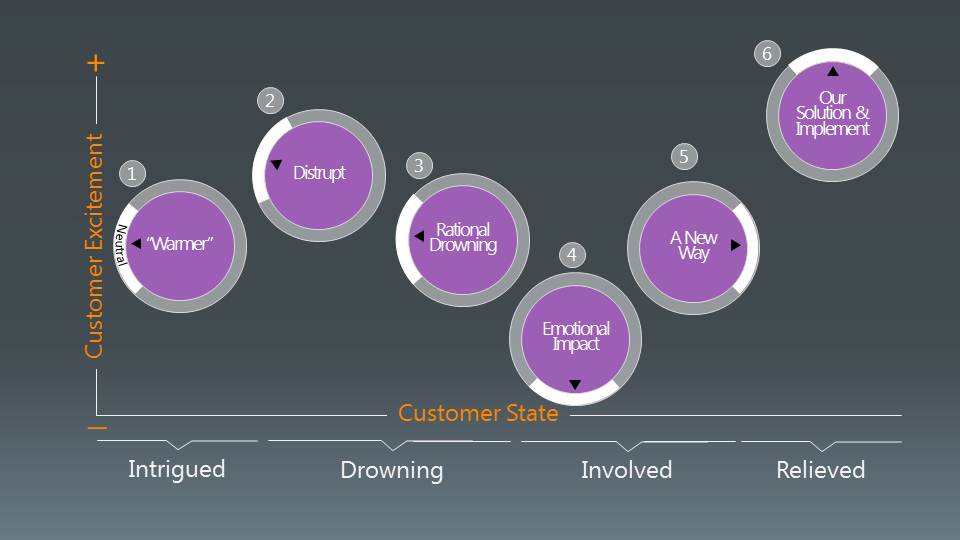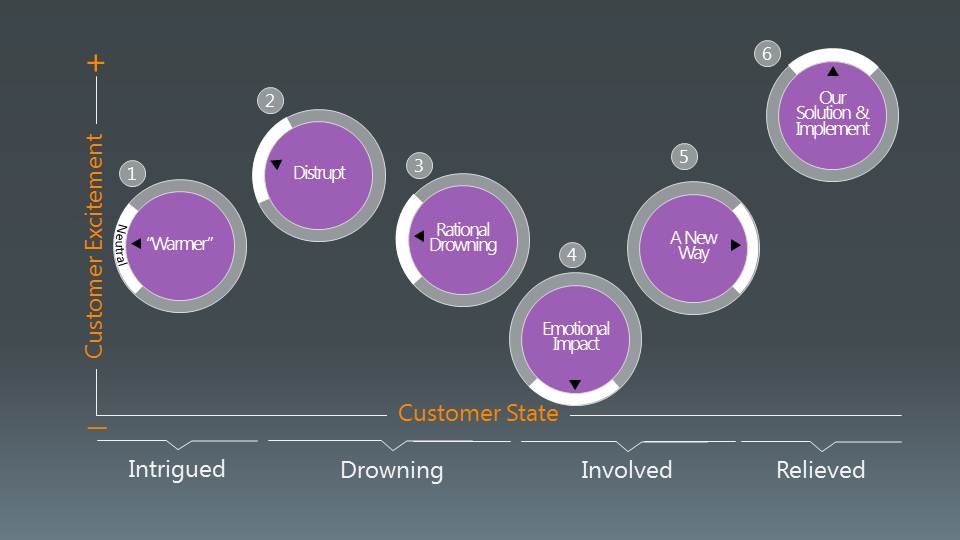
Applying Insight Selling Technique to Your PowerPoint Presentations
In a single day, two of my clients discussed strategies on how they would like sell to potential customers. They used the term “Insight Selling,” citing the rationale that today’s customers are engaging suppliers only after they have done significant due diligence to determine their needs, identify a solution, and settle on a price they are willing to pay for that solution (57% have already made their purchase decision by time you are in the game). That means, salespeople are being relegated to a role of fulfillment and price competition by the time a customer reaches out to them.
Because no one wants to be in that position, the best sales people get to prospects before the typical sales funnel starts and begin to shape the nature of their demands by teaching with insight where customers learn.
So how does this apply to PowerPoint presentations? Take a look at this graphic. It details how one might use Insight Selling to shape a client’s demand. However, I see this pitch deconstruction as a very “insightful” sales presentation flow: Image 1 — Data source: CEB. See their site at http://saleschallenger.exbdblogs.com/tag/insight-selling/
Here’s how Eaton Corporation, a U.S. based diversified power management company and global technology leader in electrical systems for power quality, distribution and control, is in part, driving their corporation to PowerPoint Responsibly.
Step 1 — “The Warmer:” in this part of the presentation, establish empathy with the prospect by demonstrating understanding of their problem. A simple example in this case might be, “We understand your company’s challenge to increase costs while improving productivity.” The prospect should be neutrally intrigued at this point.
Step 2 — Reframe: this is the opportunity to disrupt the way a prospect thinks about purchasing product for his company. Example: “Did you know that the part you are currently purchasing needs to be replaced on average 10 times per year?” Still intrigued, the prospect’s excitement level increases while he realizes that yes, the product he purchased has a similar failure rate.
Step 3 & Step 4– Rational Drowning & Emotional Impact: This is where a presentation personalizes the newly reframed problem for the prospect. Example: “That means on average, your company spends $___ each year in travel time and employee downtime to fix and replace the product .” The prospect might be feeling a little tense here.
Step5 – Value Proposition: Introduce a new way to look at the solution. Example: “Instead of just looking at purchasing less expensive parts to reduce your hard costs, consider purchasing a product that fails less and can reduce your variable costs.” Things are looking up at this point and you’ve probably successfully disrupted the way he has been thinking about purchasing parts all along.
Step 6 — Our Solution: Now, and only now, introduce the solution. “Not only will you reduce the number of times you have to replace Product A, you will also save money on repair, travel and downtime costs. That averages out to $___ kajillion dollars in a year’s time.”
This last step is really important. If you don’t drive everything presented in Steps 1- 4 back to your company’s product/service solution, you’ve just provide free consulting.




